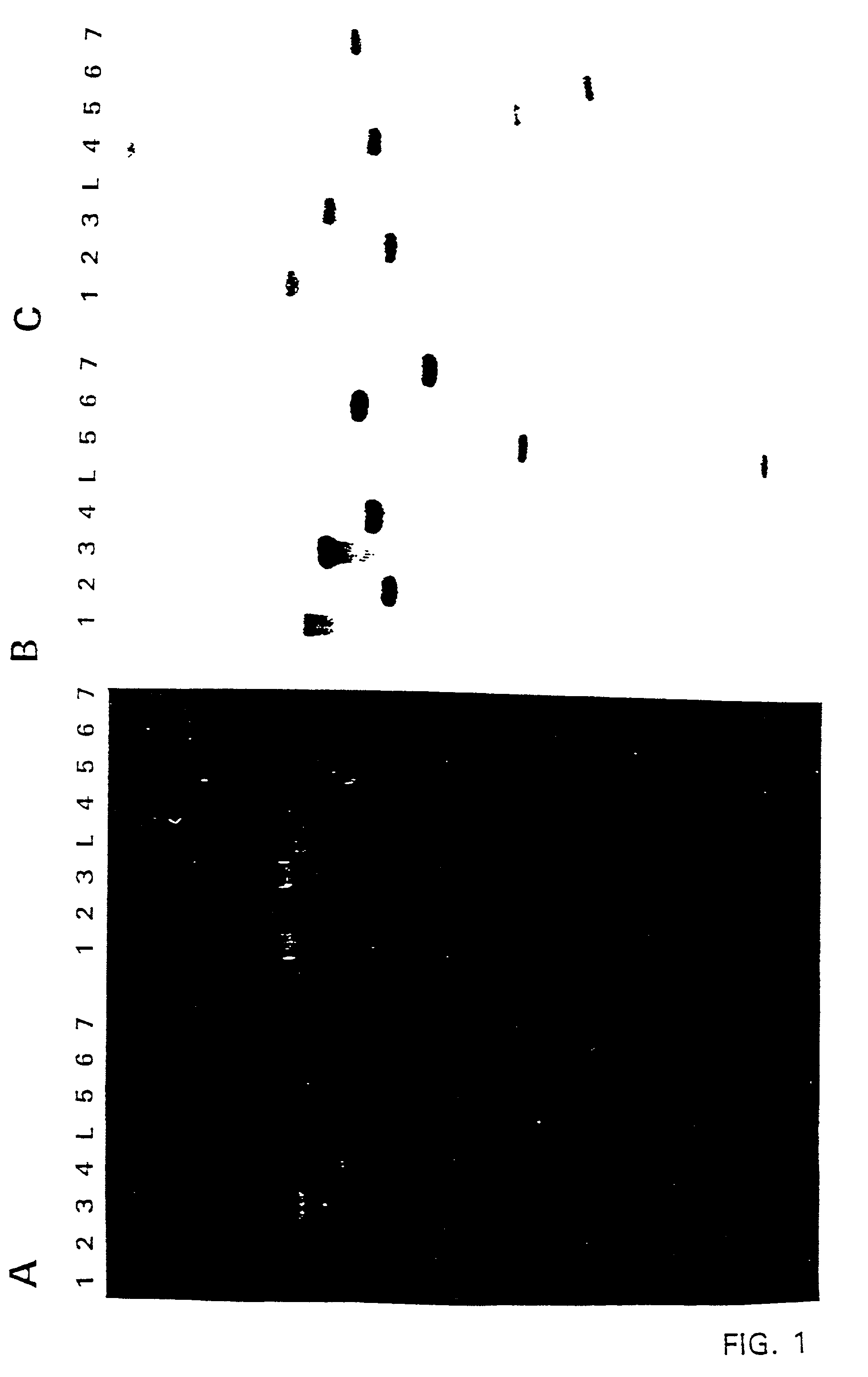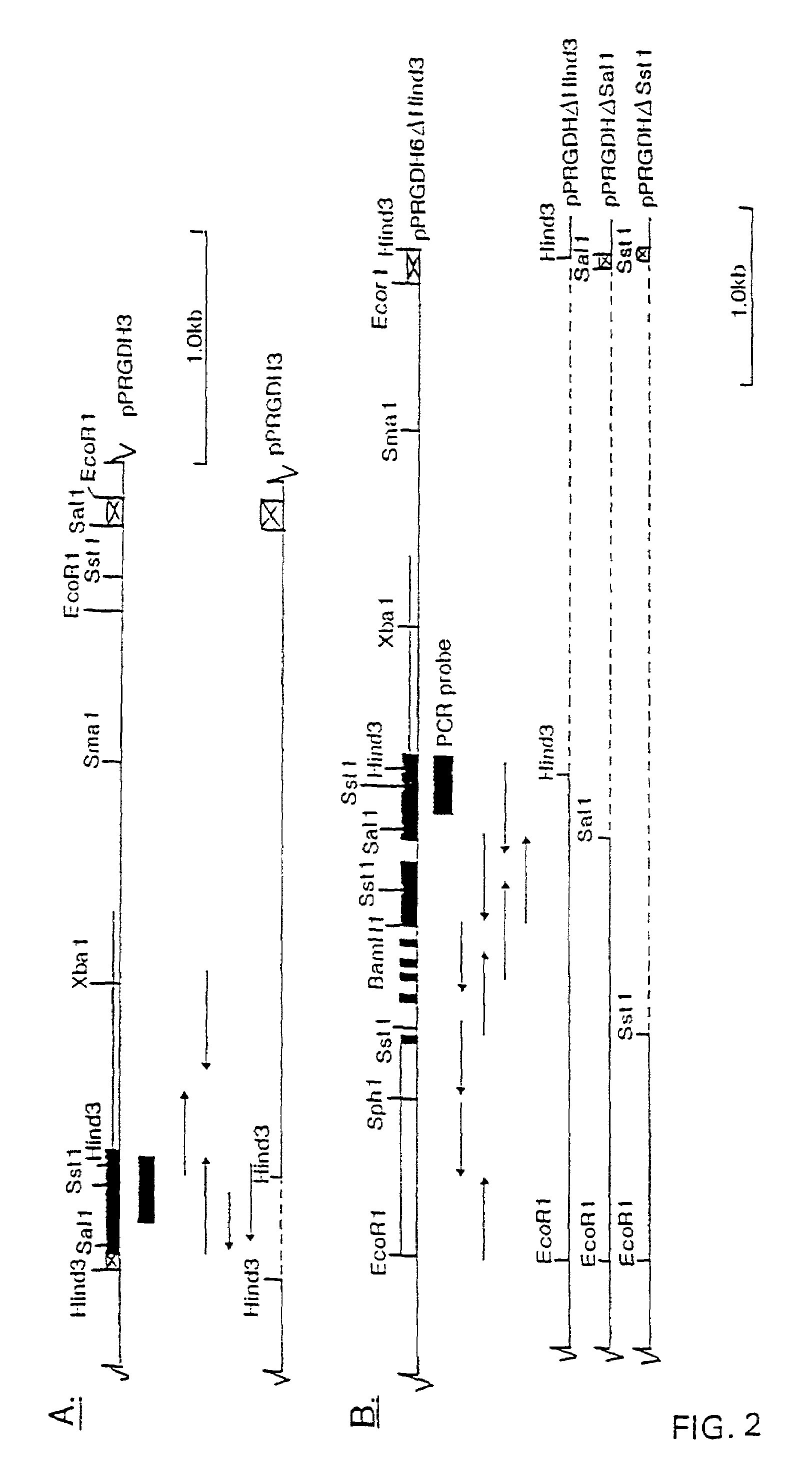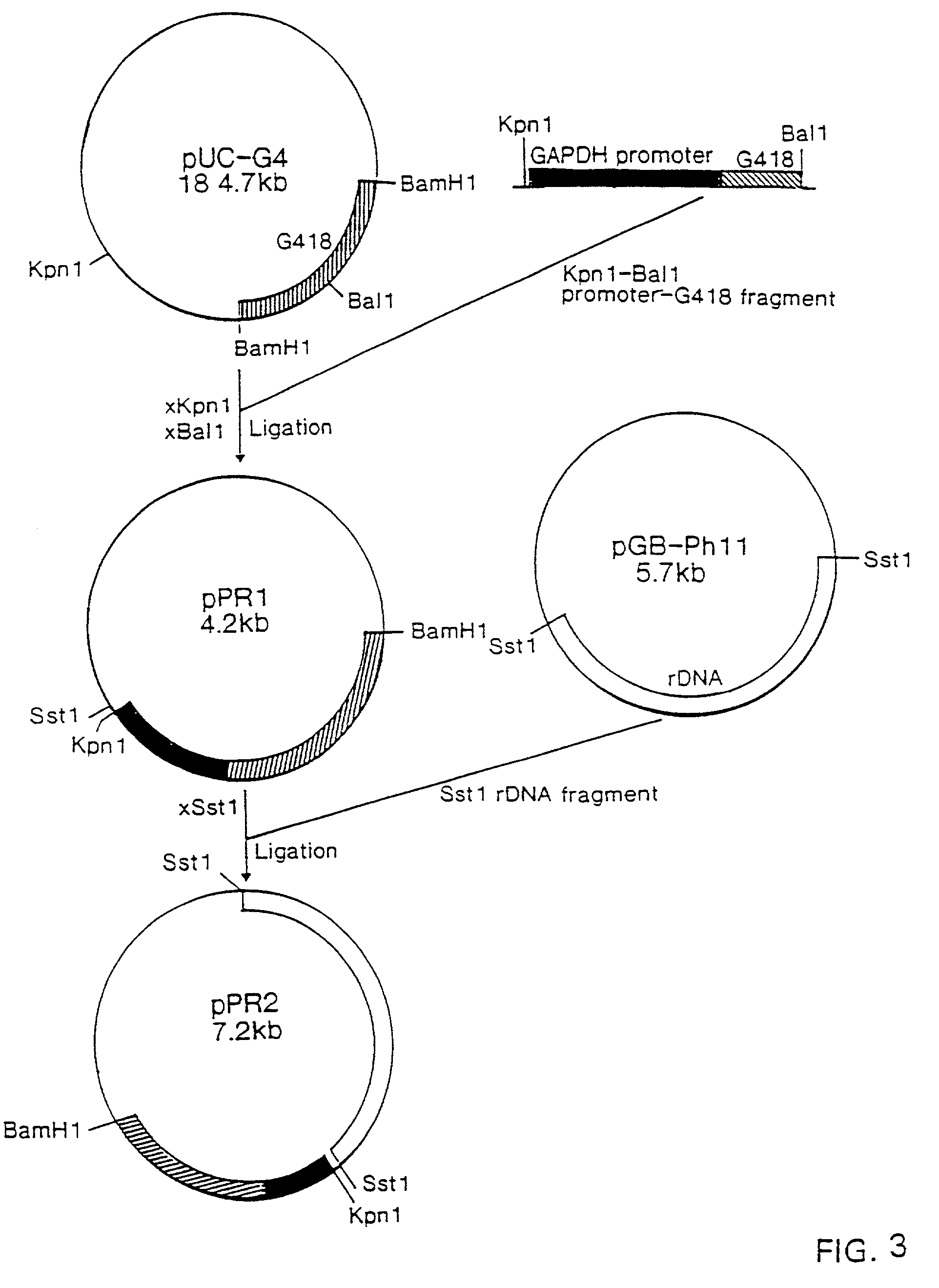Recombinant materials for carotenoid production
a technology of recombinant materials and carotenoid, which is applied in the direction of enzymology, peptides, and transferases, can solve the problems of increasing the doubling time of the transformed cells and less reliable procedures
- Summary
- Abstract
- Description
- Claims
- Application Information
AI Technical Summary
Problems solved by technology
Method used
Image
Examples
example 1
G-418 Resistance of Phaffia Transformant G418-1
[0138]To determine the expression of the G418 resistance gene in pGB-Ph9, transformant G418-1 (EP 0 590 707 A1) was exposed to increasing concentrations of G418.
Two dilutions of a G418-1 culture were plated onto YepD agar containing 0–1000 μg / ml G418 (Table 1).
[0139]
TABLE 1Survival of Phaffia transformant G418-1 on YepD agarmedium containing increasing concentrations of G418.Phaffia G418-1Phaffia G418-1Dil. =Dil. =Phaffia (CBS6938)10−4(OD600 =10−5(OD600 =Dil. =[G418]μg / ml7)7)0(OD600 = 5)0>30074>300200>300700300>30061040021213050010206000007000008000009000001000000
[0140]At a concentration of 600 μg / ml G418 less than 1% of the plated cells survived. It can be concluded, that despite multicopy integration of pGB-Ph9, G418-1 shows a rather weak resistance to G418 (Scorer et al., 1994, Bio / Technology 12, p. 181 et seq., Jimenez and Davies, 1980, Nature 187 p. 869 et seq.), most probably due to a weak action of the Phaffia actin promoter in t...
example 2
Synthesis of Specific Probes of Glycolytic genes from Phaffia rhodozyma by PCR
[0141]The polymerase chain reaction (PCR) technique was used in an attempt to synthesize a homologous probe of the genes encoding glyceraldehyde-3-phosphate dehydrogenase (GAPDH), phosphoglycerate kinase (PGK) and the triose phosphate isomerase (TPI) of Phaffia rhodozyma.
[0142]A set of degenerated oligonucleotides was designed based on the conserved regions in the GAPDH-gene (Michels et al., 1986. EMBO J. 5: 1049–1056), PGK-gene (Osinga et al., 1985. EMBO J. 4: 3811–3817) and the TPI-gene (Swinkels et al., 1986. EMBO J. 5: 1291–1298).
[0143]All possible oligo combinations were used to synthesize a PCR-fragment with chromosomal DNA of Phaffia rhodozyma (strain CBS6938) as template. Chromosomal DNA of Saccharomyces cerevisiae and Kluyveromyces lactis as template was used to monitor the specificity of the amplification. The PCR was performed as described above, the PCR conditions were 1′ 95° C., 2′ annealing ...
example 3
Isolation of the GAPDH-Gene of Phaffia
[0146]To obtain the complete GAPDH-gene including expression signals the 0.3-kb BamHI fragment of pPRGDH1 was used to screen a cosmid library of Phaffia.
Preparation of the Vector for Cosmid Cloning.
[0147]Vector preparation was simplified, because of the presence of a double cos-site in pMT6. PMT6 was digested to completion with blunt end cutter PvuII to release the cos-sites. Digestion efficiency was checked by transformation to E. coli DH5α and found to be >99%.
[0148]The PvuII digested pMT6 was purified by phenol:chloroform extraction and ethanol precipitation and finally solved in 30 μl TE at a concentration of 2 μg / μl.
The vector was subsequently digested with cloning enzyme BamHI and the vector arms were purified as described above (“Experimental”).
Preparation of Target DNA
[0149]Isolation of genomic DNA of Phaffia strain CBS6938 was performed as described in the part named “Experimental”. The cosmid pMT6 containing inserts of 25–38-kb are m...
PUM
 Login to View More
Login to View More Abstract
Description
Claims
Application Information
 Login to View More
Login to View More - R&D
- Intellectual Property
- Life Sciences
- Materials
- Tech Scout
- Unparalleled Data Quality
- Higher Quality Content
- 60% Fewer Hallucinations
Browse by: Latest US Patents, China's latest patents, Technical Efficacy Thesaurus, Application Domain, Technology Topic, Popular Technical Reports.
© 2025 PatSnap. All rights reserved.Legal|Privacy policy|Modern Slavery Act Transparency Statement|Sitemap|About US| Contact US: help@patsnap.com



